Dogs are naturally curious, physical, and exuberant, and while we love this about them, these characteristics can also lead to unintentional injuries. These can run the gamut from very minor to severe and life-threatening. How do you know the difference? When is it time to consult a veterinarian and when can you treat a dog’s wound at home? Here are some steps for assessing wounds and treating them.
1. Keep in mind that wounds are painful!
Even though your dog may have never snapped at you or bitten before, tender injuries can make even the most docile, sweet-natured dog snap or bite. Whenever handling an injured pet, make sure that someone restrains the dog properly while you examine and investigate the injury or wound for treatment.
2. All bite wounds should be evaluated by a veterinarian.
If your dog scuffles with another dog, cat, or a wild animal, immediate care with a vet is needed. This is true for several reasons:
First, animal teeth drive bacteria deep into wounds, even if they are only small punctures. Antibiotics are generally warranted any time that a dog is bitten by another animal.
Second, your dog might need to receive a rabies booster, particularly if he was bitten by a stray dog or cat or wild animal.
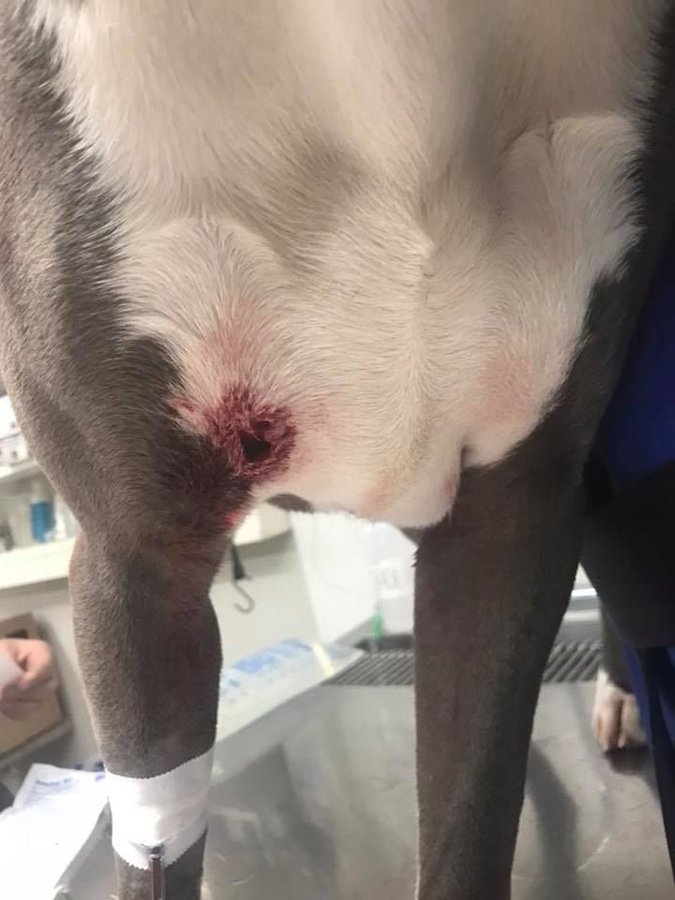
Finally, bite wounds are often referred to as “tip of the iceberg” injuries. Though the external wounds may not look severe, there can be underlying trauma to the muscles and other tissues (particularly in the case of a smaller dog being grabbed and shaken), or even internal bleeding.
3. Any punctures that have an unknown source should be treated by a veterinarian.
Puncture wounds can represent several types of injuries including gunshot wounds, bites from other animals, or foreign-body penetration. It is not uncommon for a stick or other sharp object to penetrate a wound and become lodged within it. Though the wound may look small from the outside, foreign material trapped in the wound can lead to delayed or lack of healing, localized infection, and/or tetanus.
4. A veterinarian should treat a dog’ wounds if they are over an inch long, occurs on the chest or the abdomen, is contaminated, or has jagged edges.
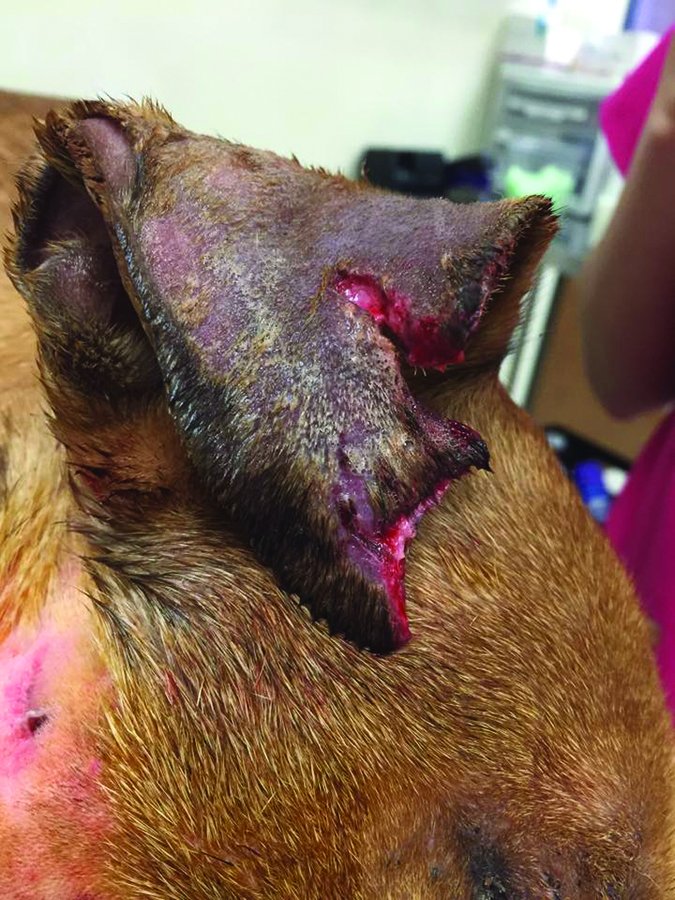
It is difficult or impossible to treat a dog’s wounds at home or to deeply clean a wound without risking injury to yourself or traumatizing the wound. It is also important to note that wounds on the body (thorax or abdomen) can be more severe than they initially appear and always need to be addressed by a veterinarian, whereas wounds on the face (away from the eyes) or small, superficial wounds on the limbs may do just fine with at-home management.
5. Use hydrogen peroxide to treat a dog’s wound only once, if at all.
Hydrogen peroxide can be used initially on a wound to decontaminate it, but it should not be used repeatedly – and, truth be told, there are better ways to clean a wound. Hydrogen peroxide on a dog wound is extremely irritating to tissue. It can impede healing if used repetitively. If you do use it on a wound, use only after the initial cleaning and do not repeat.
Avoid alcohol on wounds, as the sudden, sharp stinging may provoke an otherwise well-behaved dog to snap or bite.
6. If the wound seems relatively minor (less than an inch long with clean edges), here’s how to treat dog wounds yourself:
You can clean gently with a warm wet washcloth and apply a thin layer of triple antibiotic ointment to the wound. If your pet licks the wound, use an Elizabethan collar (aka “cone”) or cone alternative to prevent self-trauma. You can also lightly wrap the wounds.
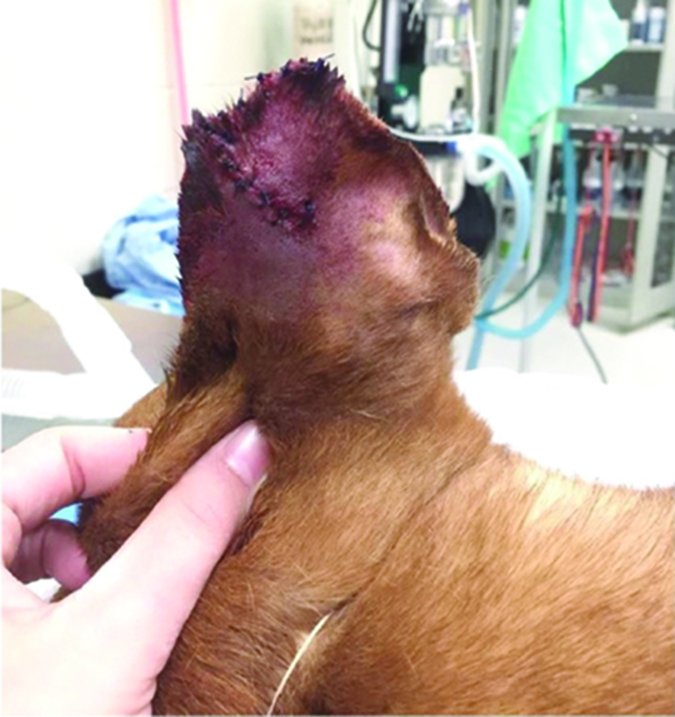
It is imperative that you are careful when wrapping. As an emergency-room veterinarian, I saw many complications related to improper bandaging of a dog’s wound.
To make a safe bandage, you should use three layers. Start with a sterile dressing square over the wound. Over that, you can place two or three layers of a cotton-gauze wrapping. The last layer should be a stretchy wrap such as PetFlex. Before placing it, unroll the stretch wrap to remove some of the tension and then rewind it. This will help prevent overly tight application. Place two to three layers over the cotton. You should be able to insert two fingers under all edges of the bandage. If you cannot, the bandage should be removed and re-wrapped.
Bandages that are too tight can lead to decreased blood flow to the limb below, as well as decreased blood flow to the wound itself. This will slow healing.
It is also imperative that a dog’s wounds receive oxygen to heal. Change the bandage every 12 to 24 hours. If the wound appears to be healing well after 72 hours, you can remove the bandage.
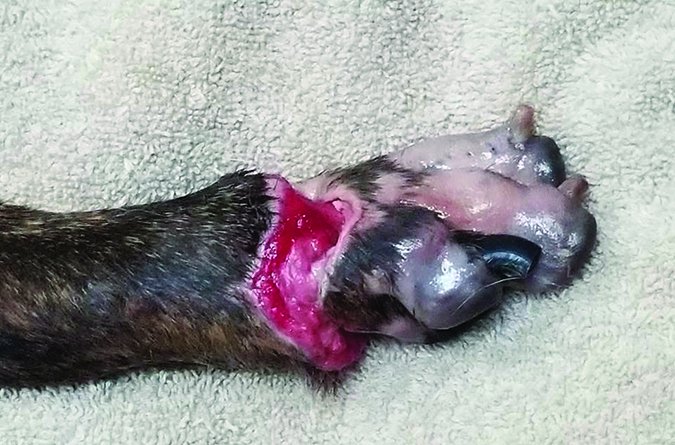
Any wound, whether being managed at home or by your veterinarian, should be monitored for sudden changes. Acute redness, swelling, or discomfort, or discharge that is thick, foul-smelling, or copious merits an immediate trip to the vet.
Is Your Dog Licking the Wounds?
Wounds go through several phases of healing, and just like with our own wounds, each phase can cause the dog to feel a variety of sensations. These can include itching, burning, pain, and a tight, pulling sensation as the skin knits back together. Dogs will frequently lick or chew healing wounds in an effort to alleviate these feelings of discomfort, but all that moisture and pressure can increase the damage to the wounds themselves (especially if there are stitches or staples present) and promote infection.
If your dog tries to lick his wound, it’s important to use an Elizabethan collar or some alternative product to prevent him from further traumatizing the area. “Cones” can be bulky and annoying to your dog, and though most dogs will adapt to wearing one relatively quickly, there are many lighter and/or more comfortable options. For a wide selection of products that might suit your dog better, see “Best Dog Cone Alternatives“.
Whatever product you use, be patient, and keep it on your dog until the wound is healed and/or your dog is no longer paying any attention to it.
Better Safe Than Sorry
It is important to remember that when in doubt, all but the most superficial wounds should be evaluated by a veterinarian. Wounds can seem misleadingly slight, belying significant tissue trauma beneath. Hopefully, your visit with the veterinarian will be a quick evaluation, wound cleaning, and some prescription medications. If not, though, the sooner a wound is evaluated, the better the chances for healing and recovery.


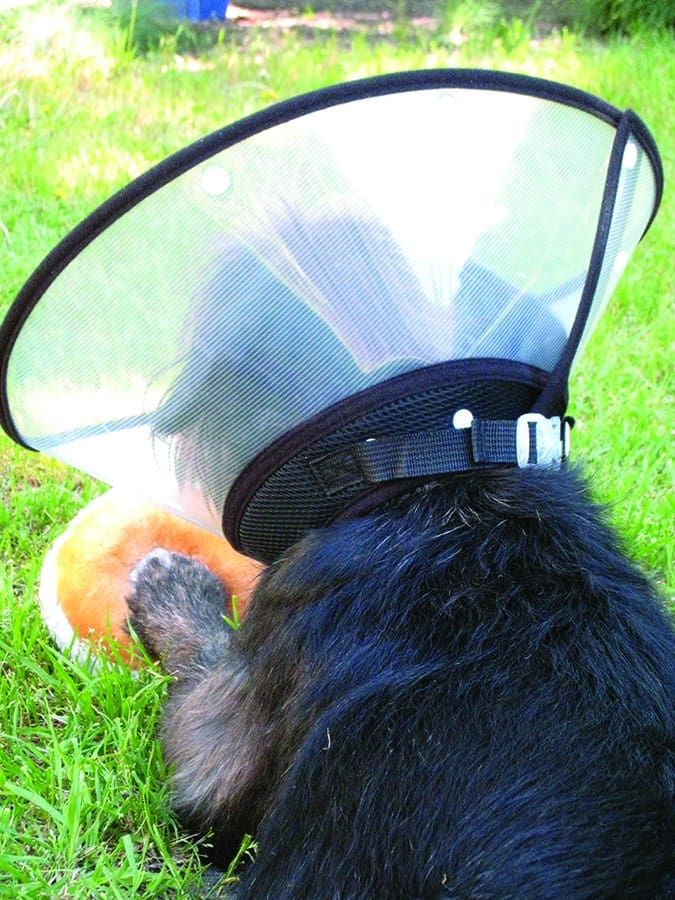
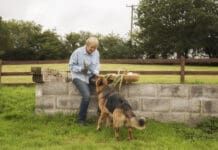



I read the article on “dogs having wounds” and I see you are a relief Veterinarian in Ashville .
Well…I just wanted to let you know your article was helpful to me!
I live in Boone and absolutely love it here and love to shop in Ashville pretty cool place!
Take care!
Sky
My dog wound is at the back and healing is too slow what should I do because he don’t me to bandage it
so my dog came home a few days ago and i had noticed he had bled on the porch and i brung him inside and he had a bad cut wound , i have no idea how it happened but i started putting a warm rag on it and i put triple anabiotic cream on it but he constantly licks it off , I don’t usually deal with dog wounds because he doesn’t get hurt that often so to a woman that would look infected to me would be probably completely different from one that really is and I don’t really have the money to take him to the vet so I don’t really know what to do
We don’t have any ointment and our dogs nails are very sharp and she won’t let us cut them and she has burning eyes and we don’t know why so she keeps scorching her face… she has 3 wounds now one above her eye, one under eye and on nose, not sure how treat her????
Give the dog to a person who can properly care for it.
You have no business owning a dog!
And I guess u got all the answers huh rude ass
Please, please, please take your dog to the Vet. A doctor will be able to cut your baby’s nails and treat the wounds properly. They’ll know what to do for sure.
Good luck and GOD bless…
My dog has issues on her paws….thick white discharge coming out from her paws….so worried…used alot of antibiotics…but no healing….sometimes it seems its becoming better…but than the Sam issues….kindly suggest me some thing how to heal her wounds at home…..
My dog age 10years,weighing about 20 kg was attacked by leopard 8months ago it was treated as a vet college he was getting healed but in recent days the wound was scratch by himself and the wound is getting the pus.
Suggest for some effective home treatment.
The dog is very active and healthy but the wound is not getting healed due to constant scratching.
Hi my dogs has I breaking out and tht is living her with wounds, what should I do to clean those wounds and for it to heal quick
My dog was viciously attacked my some random woman’s dog walking down my private road. He Has a huge gash on his chest. I took him to the vet and the vet told me she will not close his huge wound because of how large it is. It’ll need to heal from the inside out first. If she were to stitch it up, it’ll only create a pocket for bacteria to grow. I left with antibiotic for my dog and a recommendation to apply raw honey into the pocket of the wound twice daily. The raw honey works as a natural antibacterial agent and also promotes moisture to the wound to allow the cells to rebuild therefore the skin will regrow. This only happened yesterday, so I’m hoping this will work out well.
Hi
Did the honey work ?
My dog was attacked by a bear three weeks ago, vet wouldn’t stitch her up, to deep , wound was 8 inches round by 7 inches deep. Vet recommended putting her to sleep.
Wound is on her upper back between shoulders. My friend cleaned it out , put liquid penicillin in it , sterile gauze in it with triple antibiotic ointment on it, and then bigger pad of sterile gauze, then wrapped her with pet flex . Changing it twice a day for first week then once a day following. The wound is now two inches wide and an inch and a half deep.
Keeping her inside, just out for restroom. She seems to be doing very good .
But wondering will her torn hide grow back together?
Yes it will ! We had our little corgis hide completely ripped off his back.. you could see all his muscles it was crazy.. we had to take hi. Home also and nurse him back to health. It took almost 2 years for his hide to completely grow back but it did. RIP YOSHI BOY
Hi Stephanie so how’s your dog now ? Because I’m in the state right now
Hi Stephanie so how’s your dog now ? Because I’m in the state right now
My puppy was nicked by a groomer what can I put on the skin there is no bleeding just raw skin
My dog managed somehow to wrap his wire around his back leg, I removed it but he still limped and had a line around his leg where the wire was. Next day it was swollen so I applied a 3 paste ointment for dogs on it and wrapped with gauze. Next day most of the swelling went down so thought it was working so repeated it. The following day my wife removed the gauze to find his leg swollen again and the skin is loose. Looks infected. Cant affors a vet and all I called demand either alot of money up front that i dont have or said wanted to give me a appointment 2 weeks away. I dont think he can wait that long.
What do I do? Give me a email and I’ll send you the short video I made this morning of zak and his leg. Please any advice would be appreciated as I’m freaking out that he may loose that leg. Its already been a week.
My dog was playing with and older dog and he bit my dog in the neck it was ment to be a death blow bite if it were a pitbull he woulda died but it wasn’t but now my dog has a gash where his Adams apple would be if he had one but it smells bad stinks up the house but I can’t afford a trip to the vet what should I do